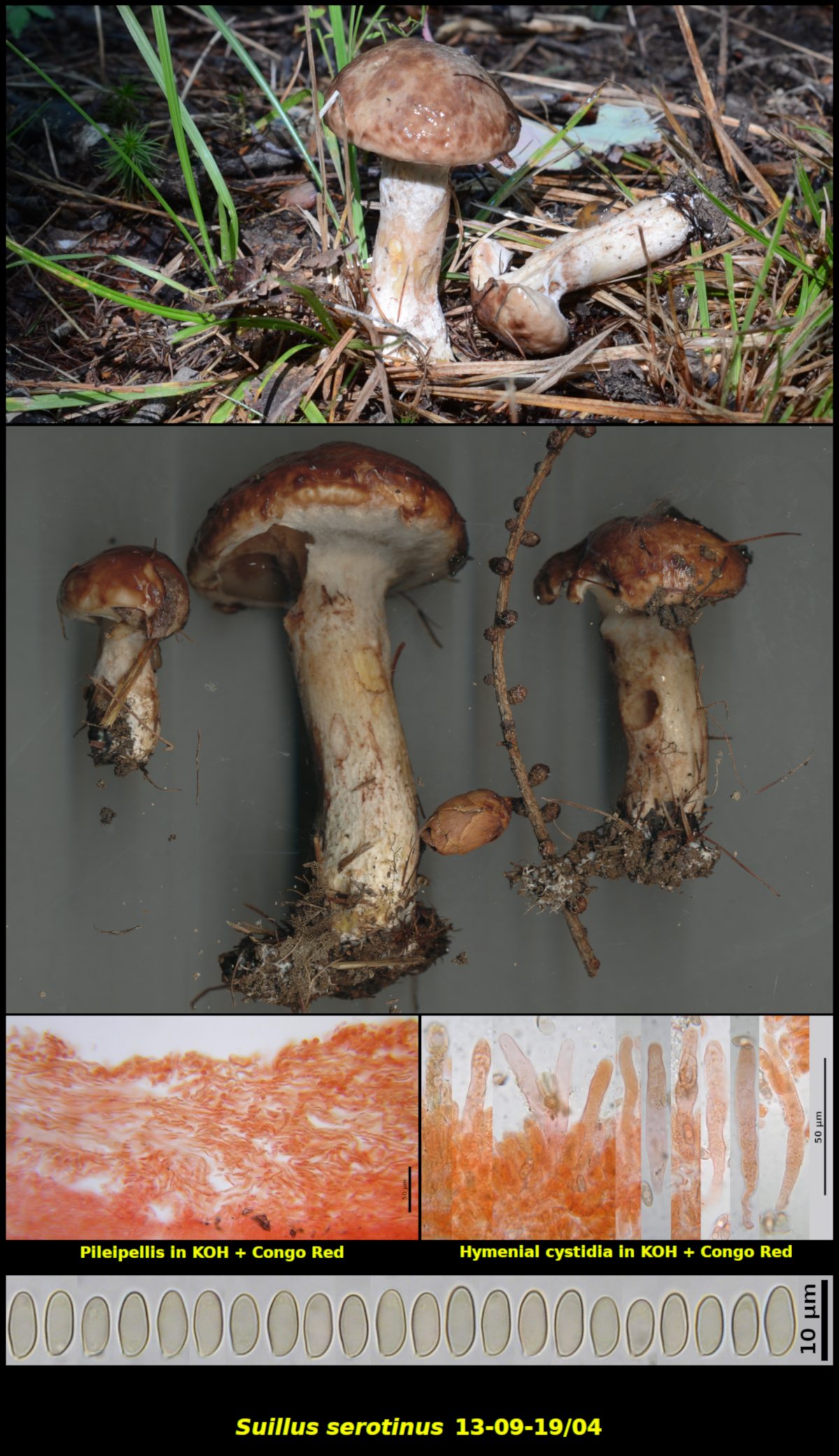Fleshy Fungi of New Brunswick >>
Suillus serotinus
Suillus serotinus (Frost) Kretzer & T.D. Bruns

Gregarious (3) at the side of an old woods road, associated with Larix laricina, Picea rubens, Populus tremuloides, Acer rubrum and Betula papyrifera, Kouchibouguac National Park, New Brunswick (13-09-19/04).
Recognized by a dark purple brown glutinous layer covering the pileus in young stages, abundant white veil material forming a persistent annulus and constant association with eastern larch. The colour of the pileus under the dark glutinous material is pale yellow to nearly white. Waxed paper, commonly used to protect mushroom collections in the field, turns green when it has been in contact with this species. Microscopically it is a typical Suillus species having small clusters of hymenial cystidia covered with a brown material.
Basidiospores reddish brown in spore print, broadly boletoid, smooth, 6.9-8.7 X 3.4-3.9 μm, Q = 1.98-2.33 (average[43]: 7.9 X 3.6 μm, Q = 2.16). Hymenial cystidia solitary or clustered in small groups, cylindrical to slightly ventricose, often coated with a brown encrusting material. Pileipellis an ixocutis, often more than 100 µm thick.
Suillus serotinus is treated by some authors as a later synonym of S. viscidus, a species described from Europe. If this synonymy is correct, then S. viscidus would be the older and thus correct name for the species. Some earlier workers have placed S. serotinus in the genus Fuscoboletinus. However, but most current authors consider that genus to be superfluous and no longer use it.
Photograph: D. Malloch (13-09-19/04).